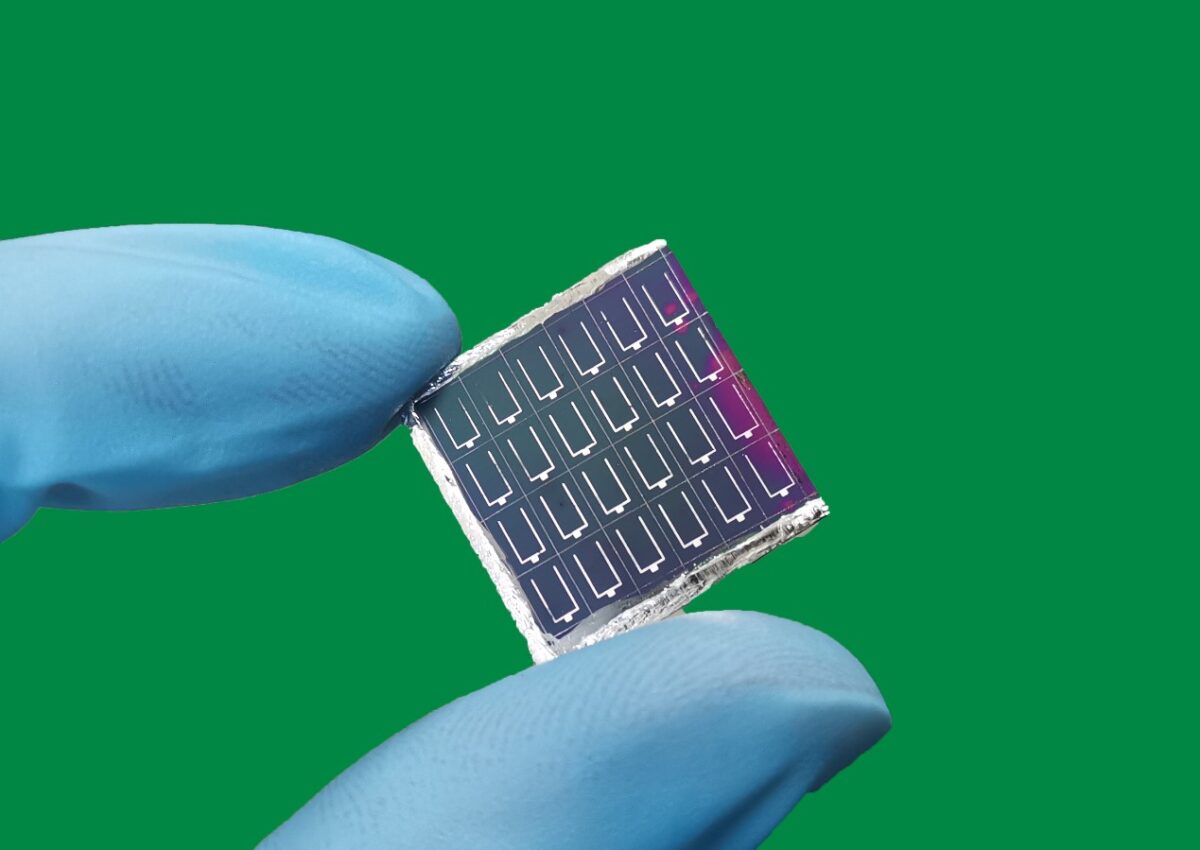Scientists from the Nanjing University of Posts and Telecommunications in China have fabricated a thin-film kesterite (CZTSSe) solar cell that uses a transparent electrode.
Kesterite is one of the most promising light absorber material candidates for potential use in lower-cost thin-film solar cells. Kesterites include common elements such as copper, tin, zinc, and selenium. Unlike CIGS compounds, there are no supply bottlenecks expected in the future.
However, kesterite is still less efficient than CIGS in mass production. The world record for such cells is 12.6%, achieved by Japanese thin-film producer Solar Frontier in 2013.
“Our cell could be used in building-integrated photovoltaics (BIPV) and agrivoltaics, as well as in solar windows and facades,” researcher Hao Xin told pv magazine.
The researchers built the cell by using a transparent fluorine-doped tin oxide (FTO) substrate coated with molybdenum (Mo) instead of commonly used substrates based on opaque Mo-coated soda lime glass. They also added a molybdenum trioxide (MoO3) layer between FTO and the precursor film to prevent the overgrowth of grains at absorber surface.
In addition, the researchers relied on sodium (Na) doping and silver (Ag) alloying to facilitate grain growth. They dissolved the absorber's compound in a dimethyl sulfoxide (DMSO) solution.
Popular content
“The solution was spin- coated on FTO substrate to form precursor film, which was further annealed with selenium in a furnace tube to form CZTSSe absorber,” the scientists explained. “Then cadmium sulfide (CdS) buffer layer was deposited on CZTSSe by chemical bath deposition.
The academics also deposited a window layer of intrinsic zinc oxide (i-ZnO) and indium tin oxide (ITO) by sputtering. They finalized the manufacturing process via the thermal evaporation of nickel (Ni) and aluminum (Al) top electrodes.
Under standard illumination condition, a cell with an active area of 0.103 cm2 and an antireflective coating based on magnesium fluoride (MgF2) achieved a power conversion efficiency of 11.43%, an open-circuit voltage of 0.522 V. It had a short-circuit current of 33.0 mA cm−2 and a fill factor of 68.55%. China's National PV Industry Measurement and Testing Center at Fujian Metrology Institute (FJL) certified the results.
“The high efficiency and facile solution process of kesterite solar cells on transparent electrodes reported here open the door for this green and low-cost thin film technology to many advanced applications, such as semitransparent, bifacial, and tandem solar cells,” the scientists concluded.
The researchers introduced the cell tech in “11.4% Efficiency Kesterite Solar Cells on Transparent Electrode,” which was recently published in Advanced Energy Materials. “For the time being, we have not estimated the production cost of cells, but we are sure that the raw materials involved in cell manufacturing itself are very cheap,” they said.
This content is protected by copyright and may not be reused. If you want to cooperate with us and would like to reuse some of our content, please contact: editors@pv-magazine.com.



4 comments
By submitting this form you agree to pv magazine using your data for the purposes of publishing your comment.
Your personal data will only be disclosed or otherwise transmitted to third parties for the purposes of spam filtering or if this is necessary for technical maintenance of the website. Any other transfer to third parties will not take place unless this is justified on the basis of applicable data protection regulations or if pv magazine is legally obliged to do so.
You may revoke this consent at any time with effect for the future, in which case your personal data will be deleted immediately. Otherwise, your data will be deleted if pv magazine has processed your request or the purpose of data storage is fulfilled.
Further information on data privacy can be found in our Data Protection Policy.